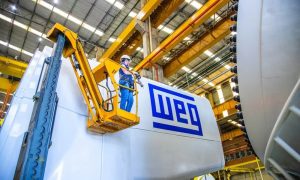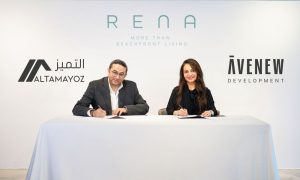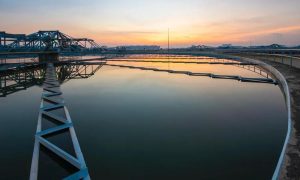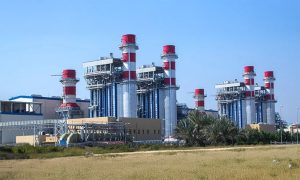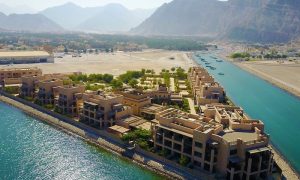Sisi’s one-year challenge: Dredging the New Suez Canal in Egypt
Waterway is largest infrastructure project to complete in the Middle East this year

When the New Suez Canal is officially opened early this August, it will represent not only an important project for the nation of Egypt, but a significant achievement for the men, machines and dredging vessels responsible for the feat.
With its iconic status, massive earthworks and the dredging of millions of cubic metres of material, the infrastructure project is the largest to be completed this year in the Middle East.
Adding significantly to the project’s challenges was the decision by the Egyptian president, Abdel Fattah el-Sisi, that the dredging works should be completed in a single year, rather than the three years initially envisaged. The price tag for the whole scheme rings in at $8.5bn, paid for by the Egyptian public through an investment certificate scheme, with the money raised in just six days.
Despite its grandiose name, the New Suez Canal project doesn’t run the full 193km of the existing canal; it consists primarily of a 35km parallel waterway. In addition, widening and deepening has been carried out in two sections, amounting to 37km. On all 72km, vessels will be able to travel in both directions.
IN PICTURES: Dredging the New Suez Canal in Egypt
READ MORE: Egypt’s New Suez Canal project work complete, UAE firm says
MORE FROM Construction Machinery Middle East magazine
Ships will still have to travel in convoys, but the improvements are expected to shorten the transit time from 18 hours to 11 hours for the southbound convoy, and reduce waiting time to under three hours, down from the current 8-11. This is expected to make the canal – the shortest route between Europe and Asia – a more attractive option for shipping companies, and the Suez Canal Authority expects the average daily number of vessels transiting to nearly double by 2023, from 49 to 97, bringing in much-needed foreign currency for the state’s coffers.
Realising these plans has required major earthworks, both dry works and the subsequent dredging, but with the canal expected to open as scheduled on August 6, the contractors and their vessels and equipment will have passed the test.
The figures for the entire project are huge: dry excavation of 258 million m³, revetment works along 100km of the canal and a total dredging volume – including 37km of bypasses – of 250 million m³.
Works on the 35km parallel waterway have set new records, including most cutter suction dredgerss mobilised for a one-year project – 21 – and highest daily production – 1.4 million m³ per day at the project’s peak. A total of 195 million m³ has had to be dredged out.
The dredging work on the new canal is being carried out by an integrated consortium of four dredging contractors – Jan De Nul, Boskalis, NMDC and Van Oord – in a contract worth $1.5 billion, with each dredger taking an equal share of $375 million.
A specialist in dredging, maritime construction and maintenance, Jan De Nul has worked on dredging projects across the Middle East, including in Qatar, the UAE and Saudi Arabia. Speaking with CMME, Pieterjan Versteele, the firm’s civil works operations manager, noted that due to the project’s compressed time schedule, the mobilisation time was very short. “The contract was signed and the dredgers should have been working already.”
To reach the target of dredging 195 million m³ in 10 months (October to July), average daily production of 600,000m³ was required. But with low production during the mobilisation and demobilisation period, the consortium had production of over 1.2 million m³ and 1.4 million m³ during the peak phases.
That made the dredging vessels – cutter-suction dredgers, which dredge out the sand using huge underwater cutter heads suspended beneath the vessels – key to the consortium meeting its production targets, and ultimately the project opening on time.
IN PICTURES: Dredging the New Suez Canal in Egypt
READ MORE: Egypt’s New Suez Canal project work complete, UAE firm says
MORE FROM Construction Machinery Middle East magazine
The vessels use huge engines to drive the cutter heads and suck dredged material from the head and push it by pipes on-shore. Jan De Nul’s vessel Ibn Battuta has 23,520kw of installed diesel power and has been responsible for dredging more than 15 million m³, while sister CSD Zheng He has dredged more than 20 million m³.
Versteele’s department is in charge of the earthmoving equipment on-shore that plays a supporting role for the dredgers, which operate around the clock. The dredgers can cut up to 3,000m³ per hour, which must be taken to the reclamation area – in this case the Sinai desert – by pipes floated by pontoons.
Jan De Nul has a long-standing relationship with Caterpillar, with several hundred units’ assets sold and serviced by the OEM’s global network, assets which include construction equipment, mobile generator sets, marine propulsion units and marine generators. For the New Suez Canal project, Jan De Nul used Caterpillar machines for key functions, including bulldozers, with the company using eight low group pressure D6Rs and three D8Rs to spread the material exiting the pipes.
“If you don’t take away that material in time, after a couple of hours you will have such a huge pile of material in front of the dredge pipe that the dredger simply has to stop,” explains Versteele. It’s a simple cost equation, comparing the cost of the small equipment with the large dredging ships which are responsible for meeting daily production targets.
Meanwhile, wheel loaders and excavators are used to position land-based sections of the pipe, in order to bring the dredged material to higher levels of the reclamation land, again to make sure the dredger doesn’t stop pumping material on-shore.
Other assets on-site include dump trucks, graders and generator sets. Like the dredgers, the machinery runs 24 hours a day, and given the importance of meeting the production schedule, up-time is absolutely critical.
IN PICTURES: Dredging the New Suez Canal in Egypt
READ MORE: Egypt’s New Suez Canal project work complete, UAE firm says
MORE FROM Construction Machinery Middle East magazine
The work done by the main workhorses, the bulldozers, is some of the most difficult work imaginable for earthmoving machinery, entailing spreading material that includes a mix of salty water and highly abrasive sand, with high humidity as an extra factor. This means heavy wear on the undercarriage of the bulldozers, with replacement needed every 800 hours for each machine, which equates to about six weeks of operation.
The abrasiveness of sand varies around the world, and in the early stages of the project the civil engineering team used measurement tools from local Cat dealer Mantrac Egypt to check the speed of wear and calculate how frequently they would have to replace each undercarriage. They also relied on the dealer to order in sufficient spare parts for them to carry out the replacement regime.
Having well-serviced machinery with high up-time is essential. The size of the job-site – with the consortium members’ vessels spread across the 35km length – means it can be a 15km drive from the main camp by car or service truck to service or repair equipment. “That complete package makes it quite a challenge,” explains Versteele. “Everything needs to be planned in time.”
Mantrac Egypt was already familiar with the New Suez Canal works, having played a pivotal role in the early stages of the project, which consisted of massive dryworks carried out by the Egyptian Army’s engineering corps and 80 different local subcontractors.
Since the cutter suction dredgers are only able to cut from sea level, and the terrain where the parallel waterway was planned rising up to 10m above sea-level, an enormous volume of dry excavation was required, using a huge number of excavators, wheel loaders, dumpers and road trucks. Once the area was reduced down to level zero, the cutter suction dredgers started coming in from the sea-side, dredging their way landward.
Mantrac supplied 400 new Cat machines to support the project, to contractors for the dry excavation and to dredging consortium partners, and has trained more than 350 operators. It also established a pop-up service workshop alongside the 35km parallel waterway section, which operates around the clock.
IN PICTURES: Dredging the New Suez Canal in Egypt
READ MORE: Egypt’s New Suez Canal project work complete, UAE firm says
MORE FROM Construction Machinery Middle East magazine
For Jan De Nul, not only is machine up-time critical – an instant relationship with the local equipment dealer to support them during the crucial mobilisation phase is too. The company, headquartered in Luxembourg, has a longstanding relationship with Caterpillar, having used their machines on major job-sites across the world, including Panama, Nigeria and Australia. That relationship means the company can begin mobilising for a project while Caterpillar facilitates their connection with the local dealer.
In Egypt, key account manager Andreas Clauss introduced the firm to Mantrac. The dealer provided support including contracting out an experienced mechanic and support for ordering spare parts, oil and grease. “We had several meetings at the start of the project where we explained what was important. Mantrac complied well, they have a huge experience importing certain spare parts on a short notice,” says Versteele.
But while support from a local dealer is always welcome, Jan De Nul is primed to be entirely self-reliant on projects. One reason, explains Versteele, is that their requirements are often significantly different from the ordinary demands a dealer may be familiar with. The usage of bulldozers in the salt and sand slurry was – perhaps not unexpectedly – quite new to Mantrac. For that reason, the dredging company established its own workshop to do a large number of jobs. But certain maintenance items, such as engine or transmission overhauls, required clean conditions that are difficult to achieve in a temporary workshop. These were carried out at the Mantrac dealer facilities, with their Suez dealership some 70km from the work-site.
A family-owned company with a policy of purchasing rather than renting equipment (except when mobilisation requires it), when the job is finished Jan De Nul will ship the machines to the next job, wherever they are required. Versteele says they normally use machines until they reach 12,000 running hours. With the New Suez Canal completed, the machines used by Jan De Nul will be checked for undercarriage wear, corrosion to the radiator caused by the salt and other known check points, and then, with 5-6,000 running hours on the clock, it’s on to the next job-site – in this case a project in Nigeria.
“That is why the support of [key account manager] Andreas is so important,” concludes Versteele. Luckily for them, in the case of Nigeria Mantrac is also the dealer. But it is not always so. “Imagine arriving with a fleet of machines with 6,000 hours on the clock in a country where you never have worked before – you need support so that the dealer has the right information, so that they have the right spare parts to supply that type of equipment with that amount of running hours.”
IN PICTURES: Dredging the New Suez Canal in Egypt
READ MORE: Egypt’s New Suez Canal project work complete, UAE firm says
MORE FROM Construction Machinery Middle East magazine
A boost for KSA?
Any increase in traffic along the Suez Canal, which is the shortest sea route between Europe and Asia, is also likely to benefit western Saudi Arabia. The opening of the original passage helped open up the western region to regular trade, leading to the growth of the seaport in Jeddah, and increased vessel traffic will likely provide a fillip to the kingdom’s Red Sea ports, including the recently opened seaport at King Abdullah Economic City (KAEC).
Following Jan De Nul around the world
Jan De Nul is a major customer for Caterpillar, with several hundred assets around the world, including construction equipment, mobile generator sets, marine propulsion units and marine generators. Caterpillar’s global dealer network plays a key role in supporting the equipment, says Andreas Clauss, the key account manager for the dredging specialist.
“We will follow Jan De Nul all over the world, whether they’re going to be in Belgium, Panama, Nigeria. When Jan De Nul is going somewhere, we can make sure the machines – everything from gensets, construction equipment, marine units – are serviced, parts are available, and we closely coordinate this with Pieterjan Versteele, making sure that when the machines arrive we’ve already got plans in place to have the machines serviced.”
IN PICTURES: Dredging the New Suez Canal in Egypt
READ MORE: Egypt’s New Suez Canal project work complete, UAE firm says
MORE FROM Construction Machinery Middle East magazine








